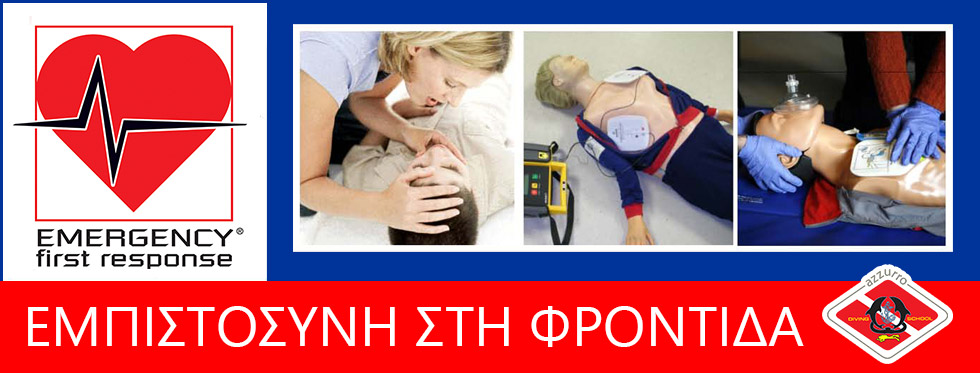E.F.R Emergency first responce
 Purpose - Conditions
Purpose - Conditions
The first aid program Emergency First Response, is the most modern program of specialization and learning techniques to provide first aid to people whose lives are at risk or in need of care, and its purpose is to fill the critical gap for life until the arrival professional help first aid (ambulance).
The first aid program Emergency First Response, concerns any mature citizen who seeks knowledge with which he will be able to intervene, when a human life is threatened, till professional means of first aid are available.
Training method
Anyone who attends the program will learn how to use a variety of special means of learning such as simplifying the handling of first aid in easily understandable steps. A Greek instruction booklet with sketches and photos, projection of a special video and practice with special adult human, child and infant dolls, and educational defibrillator will be used. The aim of this innovative training method is to create rescuers with the biggest available utmost confidence in their abilities, to provide first aid when required.
Who can enroll in the program?
Anyone at any age has the opportunity to enroll in the Emergency First Response program. Lower age limit does not exist and it is at the discretion of the instructor to accept people under the age of 18 according to their abilities and willing to understand the content of the training.
Conditions of participation
Prior knowledge or experience in first aid is not a prerequisite for participating in the training. The Emergency First Response program is a complete program that provides all the necessary knowledge. The EFR Primary Care programs and EFR Secondary Care may be performed together or independently of one another. For participating in the EFR Secondary Care program, the EFR Primary Care program must be completed first.
The Full Emergency First Response program includes two major sections. The primary care (Primary Care), comprising of artificial respiration, cardiopulmonary resuscitation (CPR), and portable defibrillator use. It also includes how to treat severe bleeding, shock and serious injury to the spine, i.e. situations threatening to a person's life.
Secondary care (casualty care) includes care for the injured (dressings, splints, etc.), patient care and the pharmacy organization.
Primary care
- Assessment of the situation
- Protective masks use
- Artificial respiration
- Cardiopulmonary resuscitation
- Treating airway obstruction
- Severe bleeding
- Addressing shock
- Injury spine treating
- Automatic defibrillator Use
- Medical oxygen Use
Secondary care
- Injury Assessment
- Disease Rating
- Wound Dressing
- Position splint for dislocations and fractures
- Patient Care
- Pharmacy Organization
Training
- Lecture and explanation of the technique by the instructor
- Video projection
- Demonstration of competence by the instructor
- Practice of each candidate with the help of the instructor
What is used during the trainning
- Special training dolls, one for adult and child and one infant
- Special individual artificial respiration masks
- Instructional defibrillator
- Special pharmacy EFR
- Educational DVD EFR to display relevant materials
- Greek training manual






